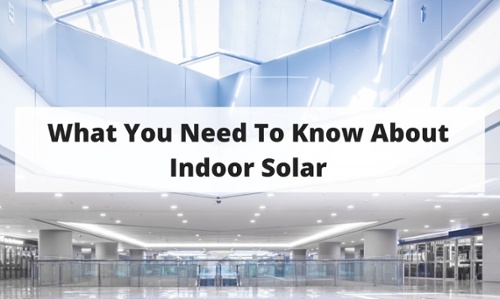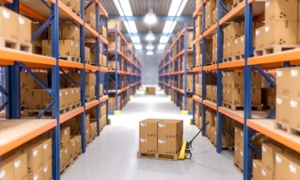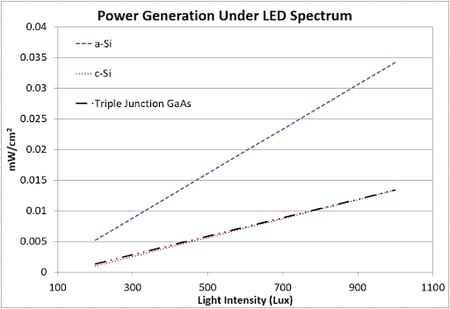
Indoor solar is somewhat of an oxymoron.
How can a solar panel work without sunlight?
Solar panels, or Photovoltaics (PV), work via the photoelectric effect, which converts light into electricity.
This effect still happens indoors under artificial light sources, but on a much smaller scale since the absolute light intensity is up to a thousand times less.
With so little power, what could you possibly do with it?
In this post, we will walk through what you need to know about using PV indoors, where and when to use it, and how to get started.
Take this blog post with you!
Make IoT and Low Power Electronics Last Forever

Have you ever been through the frustrating experience of changing the battery on your electronic door lock and thought to yourself, “Is there a way to make this thing last forever”?
Indoor PV does precisely that.
Cutting-edge next-generation IoT devices and networks stand to benefit the most.
Electronic price tags (ESLs) that don’t need batteries, BLE, and cellular trackers that never die, or set and forget smart home and industrial sensors with zero ongoing maintenance.
These are just some of the endless opportunities where indoor PV adds significant value to a use case, device, or system.
Are All Indoor Environments The Same?

Many indoor environments have different brightnesses, lighting conditions, light sources, and devices that may be stationary or mobile.
The good news is that most indoor environments can support basic device functionality.
Brighter environments will provide more power which means increased device functionality.
The chart below shows the typical light level of common indoor spaces and the expected PV output.

A warehouse shelf could be anywhere from 50-200 lux, which is enough power to run short-range beacons and low-power sensors.
Retail stores, office spaces, and other bright indoor environments may be several times brighter, able to support longer-range trackers, displays, locks, and more.
Installations directly underneath light fixtures or on windows generate even more power and support gateways, modems, and other medium power applications.
Do All Solar Panels Work Indoors?
Most PV is optimized to collect direct sunlight and may not work indoors.
Minor material defects and spectral differences can prevent a traditional panel from performing.
The chart below shows the indoor performance of Amorphous Silicon (a-Si), Crystalline Silicon (c-Si), and Gallium Arsenide (GaAs).
As you can see, a-Si significantly outperforms the traditional technologies, c-Si, and GaAs, under a low-intensity LED spectrum.
PowerFilm’s Indoor Light Series a-Si thin-film solar panels are designed and guaranteed to provide high performance in indoor light settings.

How To Get Started

Getting started with indoor solar is easy!
PowerFilm offers several standard designs and plug and play development kits that include everything you need to power a device with an indoor PV cell.
The Solar Development Kit with e-peas PMIC and CAP-XX Supercapacitors is a total power management solution to directly power and prototype with external electronics. Using the e-peas AEM10941, this kit comes with PV cells, a rechargeable battery, implements energy harvesting, battery charging, and output regulation to bridge the gap between solar and electronics.
The Solar Development Kit with Nordic BLE (DEV-BLE-NS) is perfect for developers looking to design or add PowerFilm’s high-performance solar to BLE products. It includes an onboard energy harvester/power management IC, nRF52832 BLE circuitry, solar panels, and all required components to be plug and play.
Check out our standard Indoor Light Series panels, available on Digi-Key and Mouser, or explore a custom size using our Custom Solar Panel Design Tool.
To learn more about indoor solar, visit our related blog posts below.
Outdoor vs. Indoor Solar: The Key Differences
What Features Are Most Important For Energy Harvesting PMICs?
Benefits of Single Cell Solar Designs
Solar Energy Harvesting vs. Coin Cell Battery: Which Is Better?
What Makes A Wireless Protocol Low Power?
There are endless applications and use cases for indoor solar.
If you have specific questions or would like to know if you can use indoor solar for your application or device, please contact us.
We look forward to developing the next generation of self-powered IoT devices with you.
Take this blog post with you!